#blue structure
Text

A blue structure on the moon?
lastwillandtestymen
1 note
·
View note
Text




these are almond blossoms if i am not mistaken!✿
(own recording, credit this post if u use)
#stim#nature#plants#flowers#spring#pink#almond blossoms#almond tree#blue#🌒 gifs#i actually might be mistaken i did not check any sources or even look at the flower structure too closely lol#do lmk!
262 notes
·
View notes
Text
Ok, I recently wrote an essay [here] talking about the definition and duties of civil engineering as well as the ethics because of the brain rot @swordfright gave me with calling Dream Sam’s ultimate engineering project. So, because I actually am a civil engineer I took it upon myself to design the title and summary of quantities sheets just like I do at work for roads but with Dream as the project instead. And in honor of angst day sponsored by @sixteenth-day-event, I figured I’d share it because I feel like it kinda works for the prison of the mind prompt.
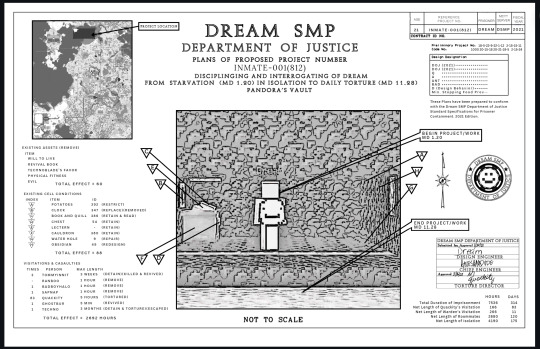

“Sam’s “ultimate engineering project” he deemed too damaged like a bumpy road or crumbling building that wasn’t worthy of patching and filling in the cracks or reinforcing, that’s too eroded to be fixed and preserved. So, Sam strived to tear him down to the bedrock so he could remake, remold, and reengineer Dream according to his design for the common safety, public health and well-fair.”
{These are very similar to the actual sheets I make day to day, which I shall not share for the sake of doxing my location, but yea pretty much everything has a significance. Some of it doesn’t necessarily make sense but that was because I was more so taking inventory of what we see in lore (so you know I counted ;) lol)}
#sixteenthdayevent#AAANNNNNGGST#Ah and now you see why I’ve been digging up all the prison lore and inventories ;D…. my brain rot is too powerful#still never got wardens torment enchants though :( did for the shovel and how which I’ll now have to write torture scenes for…#so ummm stay tuned for that in Misery Loves An Idiot… Dream going to have lots of fun I’m sure >:)#c!dream#dsmp#dreblr#dream smp#dsmp dream#dsmp analysis#dsmpblr#prison arc#dsmp art#pandora’s vault has a singular purpose#pandora’s vault#c!dream fanart#blue does art apparently#ah Sam… such a good engineer… if only he realized Dream was a person not a condemned structure oof#if y’all are curious enough I might share a irl work example with different numbers and stuff but didn’t want to bore you XD#happy angst day :)… wait isn’t that everyday? lol#can we talk about how I’ve done all of these prompts as descriptions of metaphors and stuff kinda funny#civil engineering
212 notes
·
View notes
Text
Fashion in Fódlan: a very long, non-comprehensive, and entirely unsolicited analysis
The fe3h writers did a pretty solid job of creating three nations with clear social, economic, and political differences. The fashion stands out to me as doing exceptionally well at expressing those differences, and, just like in the real world, it works as a sort of socioeconomic barometer that helps tell Fódlan's story.
In this post, I'll break down the key clothing trends in the three regions and provide some light interpretations, largely related to $$
Please note that I'm NOT using this post to discuss historical inspirations. Also, not everyone from every region is included. In particular, anyone whose outfit is too much of just a riff on a class uniform (like the Ashen Wolves or the various minsters in the empire) is left out.
There's a part 2 now lol (church of seiros time); part 3 as well!
1. Holy Kingdom of Faerghus: function IS fashion, baby!!
Fearghus, beloved land of ice and snow and spooky folktales about watering your fields with blood and ghosts living under the ground - you did not come to fuck around. You're here to protect the commoners and go back home to a stew that may, if you're lucky, actually have some meat in it. In this kingdom, you're going to dress warm and you're going to like it. Oh, you have some extra money? Gonna spend it on something for yourself? Better be using it for something useful, like keeping your plate armor in good condition. (Please note: Catherine, though being Faeghan, is excluded because she wears the uniform of the Knights of Seiros, not her own clothes.)

Trends:
High collars, long skirts - generally as little exposed skin as possible. (There is exactly one pair of bare hands in the entire kingdom. Mercie is getting a little bold 👀)
Fur cloaks/capes/gloves, or just fur around the cuffs and collars if they don't have a full fur cloak.

Armor - every single man is dressed in armor, as is Ingrid. Most of the men have full suits of plate armor, but Felix, Rodrigue, and Ashe are wearing only gambesons (note the quilting in Felix's sleeve - that's what gives it away, imo). The folks in plate armor would have gambesons on as well (you can see Ingrid's underneath her breastplate), acting as padding for the plate armor. I think Gilbert is wearing plate armor with a tunic over it (a realistic historical practice).

Fastening is accomplished with clasps and lacing, and there are relatively few buttons or adornments to be seen on the main garments - Annette is an exception, which will be addressed later.
Brief analysis:
Notice the economical use of fabric - their clothing tends to lie flat, with fabric being layered for warmth rather than pleated, gathered, or puffed. The folks in plate armor may spice it up a little with a sash of some kind if they aren't already wearing a cloak or cape. I'm assuming Gilbert's ~stylish tunic~ is keeping him warm well enough to not need a cloak or larger scarf. (Mercedes has a ruffles and puffier sleeves, plus a fuller skirt, but it's worth noting that she is currently part of a merchant house, and merchants tend to be wealthier and actually occupy a unique social class between nobles and commoners.)

Note the colors, too. Greens, browns, and yellows are the cheapest and easiest dyes to make and use. That bright sort of tawny color that Gilbert, Annette, and Jeralt all have is easy and cheap. Gilbert's grey tunic could feasibly just be undyed wool. A true blue is difficult, but you'll note that the blue the people wear up here leans towards grey and green - could be that the dye is faded, or that it was never very blue to begin with. The only true blue is on Dimitri.
All of this reinforces the idea that Faerghus is not a rich nation, and the nobility don't live too far off from the common folk. The vast majority of the cost we see is actually their armor (worn by Dimitri, Dedue, Sylvain, Gilbert, Jeralt, Matthias, Ingrid, and also if we're getting all the way into it, Gwendal, Miklan, Lonato, and Baron Dominic as well), which is would have been pretty expensive. You'll notice they mostly wear grey armor with very little extra decoration, keeping the costs low. Ingrid, the poorest of the nobles in armor, also has the least actual plate. Felix and Rodrigue both have full cloaks, which most other people don't have (just Dimitri), but they also aren't wearing plate, so clearly that's a calculated choice.
That being said, even within these more economical fashions, we can still see clear differences between classes. Most noticeably, Felix (rich) and Ashe (not rich) have very similar outfits, but Felix's tunic/gambeson is lined with fur, while Ashe's is not.

BTW I'm of the opinion that the Fraldariuses are the richest people in the kingdom other than the royal family, and I believe that specifically of their fancy cloaks lol
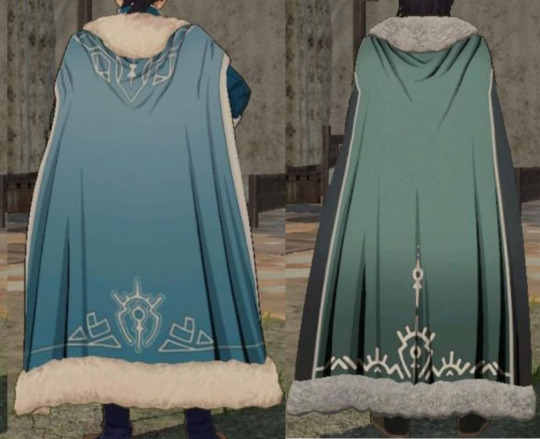
so luxurious~
2. Adrestian Empire: look at my money bitch
Ah, the land of beauty and excess! I love to live in the capital and visit the cultural icon that is the opera and pretend that I'm not in Wealth Inequality Central. (Please note: Petra is not included, since she dresses according to Brigid's fashions. Also note: I fuck w these styles so hard, dude.)

Trends:
Short skirts (above the knee - Dorothea has a draped over-skirt thing, but her main skirt is shorter, and Manuela has leg slits instead of a short hem), low or square necklines, open backs. In general, we're looking at a lot of exposed skin. Forgot to include Cornelia in the pics, but she has this too.

Tailored jackets with just SO many buttons. Hanneman fits into the tailored jacket category, but isn't included in the highlights by virtue of Not Enough Buttons. (Some concept art is included here to drive the point home.)
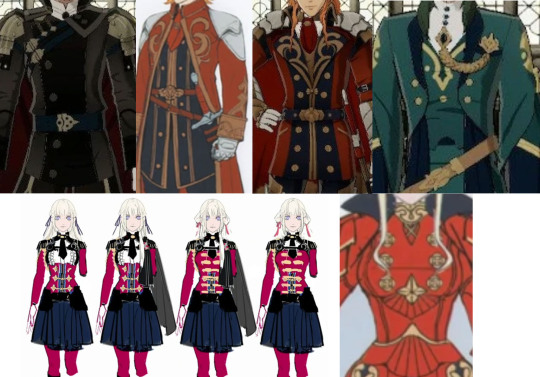
Finally, there's this specific very specific double-breasted neckline thing (baby edelgard is separate bc i forgot to include her when i made the first image shhhh)

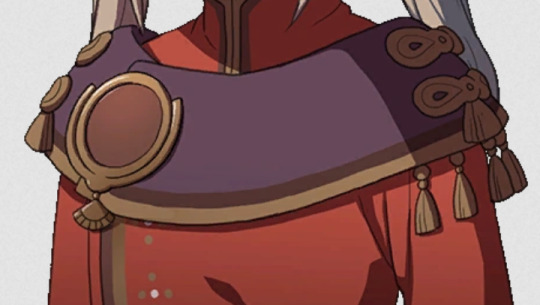
Brief analysis:
Adrestian fashion is all about displaying status and wealth, in this case through ornamentation, rich colors, uniforms denoting class/role, and also a fair amount of excess fabric.
Historically, fabric itself was one of the major indicators of wealth - in fact, certain historical styles very explicitly showed off just who was rich enough to afford, for example, a whole gown made from the same length of fabric, or even just an entire skirt panel with no piecing. In the Adrestian Empire, We've got excess fabric galore, tucked away into all those beautiful ruffles and bell sleeves, layered skirts, unnecessary capes, double collars, and puffy pants - and it's all in much more luxurious colors, too. In fact, I'm pretty sure the largest single piece of fabric on anyone in the game is Edelgard's cape, which is then also adorned with dozens of buttons and extra bits of fabric. It's almost definitely fully silk, both the outer layer and the lining. (And it's badass.)

Look at all that fluff! Dimitri's cloak probably rivals hers in the size of the actual fabric itself, but his is likely a heavy wool (unlined, maybe?), plus has a lot of fur.
"Oh, but pg, there are capes in Faerghus, too!" yes, but in Faerghus, they live in the arctic /hj. Note the vast expanses of exposed skin down here in the empire - clearly, cold is not an issue. You'll also note that the cloaks in Faerghus were heavy and lined with fur; that's not the case here. Given the prevalence of tailored jackets and the dual colors on Ferdinand's cape, I'm guessing they're either a comparatively lightweight wool with a silk lining (typical for tailored suit jackets, nothing particularly noteworthy about that), or just fully silk. (Bernie's shawl is just cotton though, prove me wrong...) Hanneman and Manuela are exceptions, since they both have fur, but they live at Garreg Mach, not in Enbarr.
The jackets themselves, by the way, could be silk OR wool. Ferdinand's in particular (especially thropes) reminds me of early 18th c. waistcoats, which would have been full silk.
We also have much richer colors down here in the land of art and song. Red, purple, and black were all very difficult colors to maintain, and very expensive. The most expensive colors, in fact. Not gonna lie, as far as price per yardage goes, I think Hubert's outfit might rival Edelgard’s in expense.
A notable exception to the excess fabric bit is Bernadetta. However, her dress is in what is arguably the most expensive color, and is heavily decorated, so that's a reasonable trade-off, and I don't blame her. I, too, would go for a smaller amount of pretty purple silk embroidered with bright, beautiful gold and yellow instead of a bigger, more impressive-looking option. It's about the little things.
I do want to take look at Caspar, in particular. He's unique in that he's dressed in a full suit of armor. But, given that he's the second son and not set to inherit anything, unlike all his waistcoat-wearing friends, he isn't being held to some particular uniform, and even if he were, it's the ministry of military affairs. Of course they wear real armor. What's interesting is that his armor is a sort of rosy grey/brass, rather than silver, and he has a lot more decoration and flair than the folks with full armor in Faerghus, in both his throuses and thropes outfits.
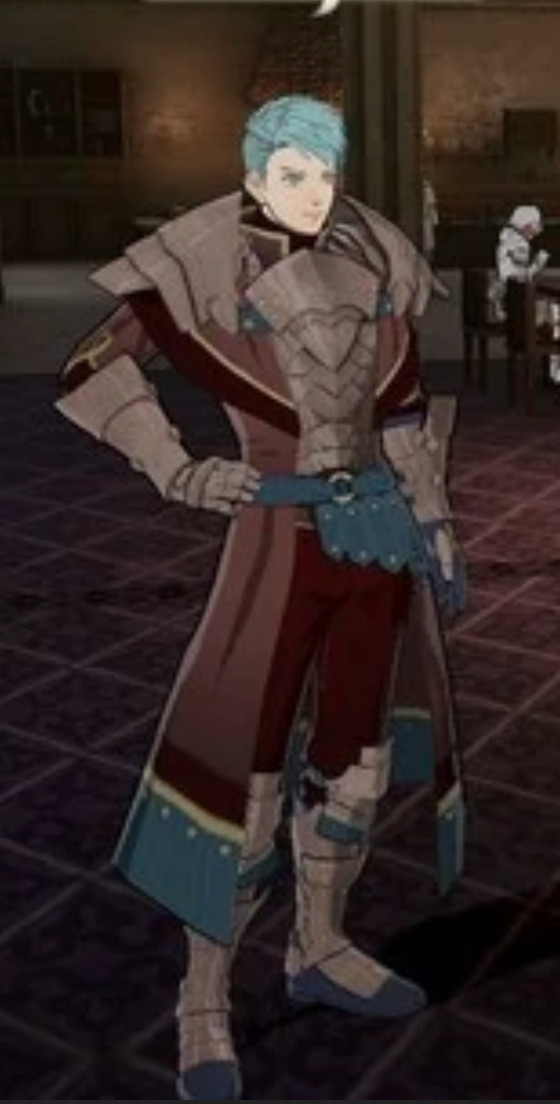

Worth noting, btw, that we have exactly zero examples of actual commoners in Adrestia, other than generic NPCs. Dorothea belongs to that peculiar niche that is opera and acting, so she is expected to dress and act like a noble, despite not having a title or property of any sort.
Adrestia - and Enbarr in particular - leads the slow march of fashion across Fódlan, given that it's a cultural hub and is so much wealthier, while Fearghus slowly picks things up over time. Thus, we have Annette, who lives closer to the empire and has disposable income, having some decorative buttons and tassels and a mock low neckline.
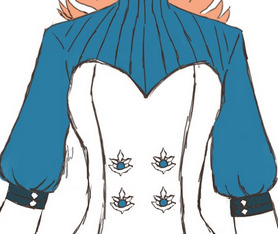

It's not nearly as much as the actual Adrestians, but she's picking it up!
3. Leicester Alliance: the beeeest of both worlds~
Oh, Alliance, you messy bitch. What we see here is a mix of everything, where some of them are influenced by Faerghus, and others by Adrestia (just like how some of them have kingdom-style names and some have empire-style names), and a few fit neither camp. There are clear reasons for similarities where they exist, though, so let's take a look! (Please note: Claude is not included, since his clothes are heavily influenced by Almyra.)
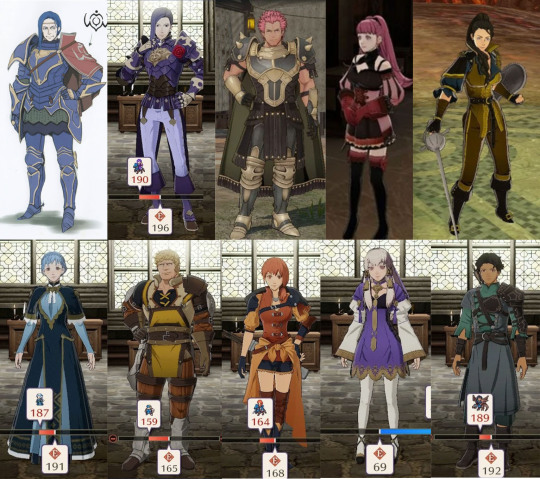
Hilda and Lysithea have the frills, puffy sleeves/skirt, short hems, low/square necklines, and expensive colors of the empire (plus, Lysithea gets a decorative veil in dark purple. How ~fancy~). This reinforces the idea that Adrestia sets the standards for fashion: Hilda cares about fashion and keeps up with the times. Lysithea lives on the border and was briefly under the control of the empire, and thus is influenced by it. Mostly, though, I think it's about how she tries to seem older and tends to see Hilda as a model of maturity (lol), so she's following that example.
Holst's armor is quite decorative, similar to Caspar's, but what stands out to me is the fringe in particular. We see the exact same fringe on Caspar, Hubert, and Edelgard, but not anywhere else.
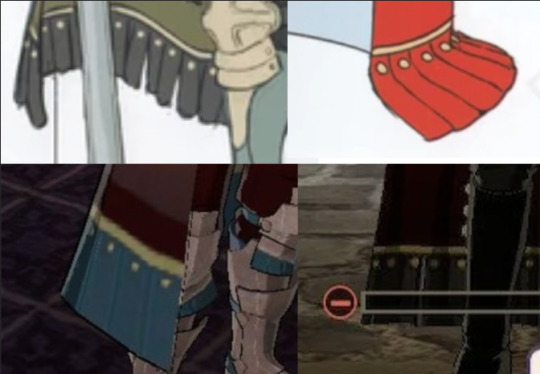
Lorenz and Erwin are a bit of a border case, tbh! They both wear practical, full plate armor with little in the way of extra decor (other than Lorenz's rose and Erwin's little cape thing), but Jesus christ how much does it cost to keep it all so purple like that??? That's a blatant display of wealth that would impress any empire noble.
Marianne, on the other hand, would fit right in in Faerghus, with the old fashioned long skirt, high collar, capelet, and lack of extra decoration other than some pretty trim. Makes sense, since her territory is so close to the kingdom and she's clearly not interested in trying to stay fashionable.
Judith is dressed very practically, has some fun puffy sleeves and bright but inexpensive colors, has a short cape and gambeson (a short vest one, though). I want to say leans toward Faerghus, which makes sense since it's on the border and the house did at one point split off, with part going back to the kingdom.
Now we get to the only real, honest-to-god, never-owned-land-or-property, born-as-and-remain-now peasants/commoners: Leonie and Cyril. (Raphael was born into the merchant class and was able to support himself and Maya by selling his estate, so while we can consider him a real commoner at this point, it's not nearly to the same degree.)
Their economic status is obvious from their outfits: both have very practical clothes with no extra decoration, in cheap and easily accessible colors. Leonie's cloak wrapped around her waist is purely functional - she can use it when the weather calls for it, but it's out of the way of her arrows when she doesn't need it - and looks to be pretty soft, so likely is lightweight. She has a hint of some light protective wear (note the quilted sleeve) and the same front clasps as Felix and Ashe, so i think she's also meant to be wearing a gambeson, but it's shorter and less protective. Cyril doesn't seem to have any armor at all except for the shoulder protection - we can tell from the lack of center-front closures on his shirt and the shape of the cuffs of the sleeves that he's actually just wearing a tunic (or rather, two tunics on top of each other).
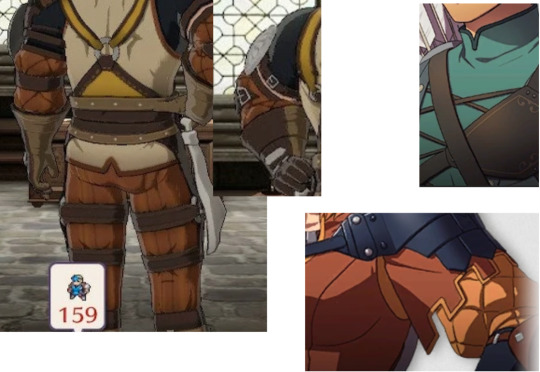
Raphael also has a very practical outfit, but notice that his is so much more protective, probably because he has a little more money than the other two. He has very limited, sparsely placed plate armor, but he is covered head-to-toe in quilted cloth armor. He's ready to get some punching done, baby!
Our real outlier, however, is Ignatz... But you bet your bottom dollar I've got an explanation for that one, too!!!!! Mans is an artist and he has rich(?) merchant parents, he can do whatever he wants.
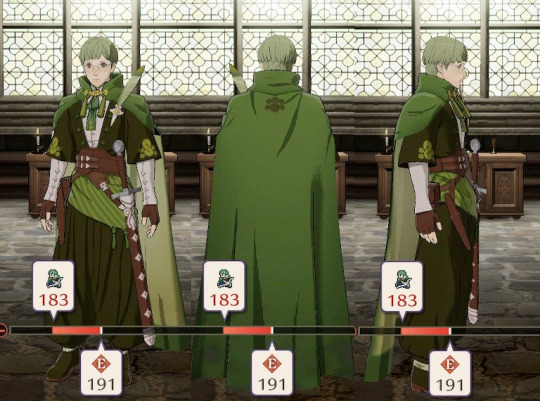
Absurdly unnecessary lengths of (probably not very expensive) cloth? Sure. Fancy feathers that literally no one else gets? Why not! A billion buttons, half of which arent even keeping anything closed? Curly and intricate cloak fasteners probably made of some kind of cording? Sashes and tassels and a decorative sword??? Fuck it, we ball. I love this so much, it's easily my favorite outfit in the entire game and I would ABSOLUTELY wear it irl. I already have the right haircut and glasses and boots, I'm ready
4. In conclusion
These designs really are Fódlan in a nutshell. From the quiet wealth and functionality in Felix's fur-lined gambeson to the audacious luxury of Ferdinand's waistcoat to the unrepentant anarchism of Ignatz's entire vibe, we can see the history - and future - of the continent outlined right before our eyes:
Faerghus is cold, practical, focused on survival, and probably has the most even distribution of wealth. Leicester is a mix of remnants of the empire and kingdom, with clear wealth disparity but also a relatively high amount of social mobility and communal support systems. Adrestia has significantly wealth disparity, with nobles very disconnected from their people and instead busy politicking about.
Side note I know I said I wouldn't go into the historical inspirations, BUT I do think it's interesting that the men's clothing in Adrestia - particularly the tailoring - is similar to much later styles than the men's clothing in Faerghus, and the reverse is true of the women's sleeves and necklines.
Okay that's all, thanks for reading!
#fire emblem three houses#fe3h analysis#holy kingdom of faerghus#adrestian empire#leicester alliance#golden deer#black eagles#blue lions#fodlan's fashion icons#(not actually part of the series but it's topical ok)#this is why i cant do cosplay btw#i see an outfit i like and i immediately am like ok how do you make that irl? get me seven yards of cotton muslin we're doing a mockup#like why would i make Felix’s outfit if I'm not going all in on actual quilted armor yk?#i dont want Ignatz's pants if theyre going to just hang lazily and bunch at the ankle it needs BODY it needs STRUCTURE#yk?#anyway its super late im going to bed now bye#fashion in fodlan
2K notes
·
View notes
Text

White and blue ceramic tiles inspired structure dress
#white and blue#azul y blanco#ceramic#ceramica#structure#estructura#dress#vestido#fashion#moda#couture#runway#pasarela#beautiful woman#beautiful dress
561 notes
·
View notes
Text
I was deep in my drunk feelings when I made a joke post threatening to write about episode 5 symbolism and mizu, but then enough people said "where is the essay" so I am here to ramble as requested
in ep 5, the tale told in the puppet show spliced with the flashback sequence of mizu’s marriage identifies mizu as not only the ronin, but also the bride and, with tragedy, the onryō. I would argue that mizu is also depicted (in a less linear fashion) as the phoenix itself, and will circle back to this thought later
mizu is first presented as the ronin, the warrior with a singular purpose. as the ronin’s lord is assassinated by the rival clan, mizu’s mother is killed in the house fire. the ronin swears his revenge, and dedicates his life to this cause. through his childhood and into his young adult life when he departs from swordfather, mizu is exclusively the ronin. he is not the onryō yet, demonstrated in his honorable unwillingness to harm the men who stab him and throw him out of the shop even after he insists that he wasn't looking for a fight in the first place
the ronin is only able to rest and put away his mission when he meets the bride, the lover. however, mizu’s bride is not literally another person she meets. the bride is not mama, or mikio, but the lover mizu discovers in herself, the one allowed to bloom in place of mizu-as-ronin. mizu’s growth into the bride from the ronin occurs over time, but solidifies in the moment when kai is gifted to her by mikio, paralleling the taming of her own distrust and expectations of being hurt. (side note, giving a nod to effective use of color: the bride puppet, dressed in reds and oranges, has matching coloring to the gifting scene, as it takes place in autumn)
mizu’s transformation into the onryō happens in two parts, beginning with the slaying of the bride and completing with the slaying of the ronin. the betrayal by mikio and mama kills the softness in mizu, kills the lover she has allowed herself to become. mizu-as-onryō retaliates by killing the ronin: the part of himself that hesitates before striking, that part that cares for honor. in not intervening in mama’s death and then murdering mikio in turn, mizu kills the ronin in himself, slaughtering it in retribution for the dead bride
mizu is both the bride and the ronin, peaceful lover and noble warrior, until he is not—he is the onryō, only the onryō. episode 5 opens with the narrator saying, “no one man can defeat an army, but one creature can.” only as the onryō, and not as the ronin or the bride, does mizu have the force of will and capacity for violence it takes to singlehandedly overcome boss hamata’s thousand claw army and protect the brothel
mizu’s identity and place in the world is a constant dialogue. he is too white to have a respectable place in japanese society, but is also seen by abijah (our stand-in for white british society) as filthy and corrupted. he is not perceived as enough of a man to walk through life wholly as one (madame kaji’s comments about his apparent lack of sexual desires, his bones breaking “like a woman’s” under fowler’s hands, his disregard for honor and recognition as a samurai). she is also not enough of a woman to exist peacefully as one with mikio (she is a swordsman, an accomplished rider, bad at domesticity; “what woman doesn’t want a husband?” mama chastises)
the moment when mikio rejects her completely following their spar is a particularly poignant narrative beat about tolerance of “the other” in gender presentation: mikio can accept her as a woman only until she bests him at manhood, at the sword, at violence. she is Other in that she is physically strong, a poor cook, able to wield a sword. these traits are all tolerable to mikio, also an outcast, so long as she is not so Other as to be a man. but her swordsmanship bests his, and bests his in the way the sun outshines a candle. it is too Other, and therefore she is not a woman. she is a monster to him, the onryō, even before she kills the bride and the ronin in herself
(( as an aside, this series does a very good job at discussing the oft-challenging relationship between race and gender (e.g. that it is difficult for mizu to live as a biracial man, but would be deadly for her to live as a biracial woman), and demonstrating how queerness of identity complicates that relationship even further—but that’s a topic for a different post ))
as the narrative has been building on this idea that mizu is both the ronin and the bride, the man and the woman, japanese and white, episode 5 concludes with the heartbreaking reveal that, although mizu is all of these things simultaneously, he has had these identities beaten out of him by tragedy and cruelty and his own self-loathing hand
but mizu does not stagnate as the monster. we return to the metaphor of steel: too pure and it becomes brittle, breaking under pressure. mizu is a sword, a weapon that he has forged for the sole purpose of revenge and blood, but he has excised too much of himself to successfully deliver on his goals—he is not the ronin or the bride, he is the onryō; she is not a woman or a man, she is the onryō; the onryō is nothing but pain and vengeance—and so it breaks
“perhaps a demon cannot make steel,” mizu says. “I am a bad artist”
swordfather replies, “an artist gives all they have to the art, the whole. your strengths and deficiencies, your loves and shames. perhaps the people you collected… if you do not invite the whole, the demon takes two chairs, and your art will suffer”
to be reforged, mizu must not only acknowledge the impurities she has beaten out of her blade, out of herself, but lovingly, radically accept them and reincorporate them into the blade, into herself. he adds impure steel—the people he has collected, with their own dualities—to the sheared meteorite sword: the broken blade that fit so perfectly in taigen’s hand (the archetypal ronin, but a man seeking happiness over glory), the knife akemi tried to murder mizu with (the archetypal bride, but with ambition for greatness), the bell given to ringo and returned to mizu in broken trust (the man unable to hold a sword, but upholding samurai principles of honor and wisdom), the tongs that honed mizu’s smithcraft under swordfather’s guidance (the artisan, a blind man who sees more than most). to make of herself a blade strong enough to see her promises through, she must hold her monstrosity and honor and compassion and artistry in equal import
she is the onryō, and the ronin, and the bride, and all the people she has collected.
with this we finally come to mizu as the phoenix. mizu undergoes many cycles of death and rebirth, both in the main storyline and the flashbacks into her life leading up to the present. often, mizu is juxtaposed against literal flames—the burning of his childhood home, swordfather’s forge, the fire as he battles the giant in the infiltrated castle, the heart sutra forge of her own making, the climactic second confrontation with fowler. not every death/rebirth mizu undergoes is thematic to flame, of course. the fight with the four fangs, spliced with the rebirth ceremony of the town, for example, or the deaths of her ronin-self and bride-self, giving rise to the onryō
he is the phoenix, unable to truly die: every fatal combat he pulls back from the brink, reborn over and over in the wake of failure and setback. in episode 1, mizu prays for the gods to “let [him] die.” not to help him to face death unafraid, not to die with honor or victory, but to die at all. mizu has experienced death a thousand times over, but not once has it stuck
(( as a parting aside: the ronin’s rage at the phoenix clan for killing his lord parallels mizu’s self hatred of his mixed heritage (which he believes to be the thing that killed his mother), and so the ronin’s quest for revenge against the phoenix clan is mirrored in mizu’s quest to kill the white part of himself as best he can, by killing the white men who could be his father ))
mizu, the ronin. mizu, the bride. mizu, the onryō. mizu, the phoenix.
#blue eye samurai#mizu blue eye samurai#hopefully this is mostly coherent#I have more things to say but this was getting lengthy#there's also a lot of gender and racial nuance I've glossed over here for an attempt at brevity and structure#god also the COLOR. do you know how much I have to say about the use of color and shadow as a reflection of the narrative#maybe I'll write another damn essay who knows#this show really scratches the part of my brain that was academically trained in film analysis#blue speaks
146 notes
·
View notes
Photo


Helaena the Dreamer
#my art#helaena targaryen#helaena targaryen fanart#house of the dragon#house of the dragon fanart#hotd#hotd fanart#house targaryen#house targaryen fanart#asoiaf#asoiaf fanart#welighttheway#couldn't decide on a version so your getting both#since dreamfyre is blue i wanted to draw her rider in something to match#will i ever stop drawing my favorite female characters as classical paintings? unlikely#i tried to lean more into phia saban's facial structure this time
823 notes
·
View notes
Text
So I have noticed something in the media I've watched recently, and how I've reacted.
Arcane - Vi
Spy x Family - Yor Forger
Blue Eye Samurai - Mizu
Baldur's Gate 3 - Dame Aylin
Glass Onion - Helen Brand
The common element? Just the sheer degree of "sports fan absolutely going nuts when their team is winning" level of cheering and excitement I have when watching strong women go absolutely ballistic on piece of shit men who have it coming.
#full on LETS FUCKING GO GIRL energy#i know mizu's gender is up for heavy debate but for the sake of post structure im not getting into that#arcane#vi arcane#yor briar#yor forger#spy x family#mizu bes#mizu#blue eye samurai#mizu blue eye samurai#dame aylin#aylin#bg3#baldur's gate 3#helen brand#glass onion#knives out
74 notes
·
View notes
Text

some ideas from an au where maglor just keeps living in britain (/himring?)
especially in the earlier eras he had to put a lot more effort into styling/dyeing his hair to cover his ears & the blueness/Elf Sparkle. he also wore glasses for a while to dim the Treelight Eyes (because even as badly faded as he is, it's still really obvious with how old he is).
#silm#silmarillion#maglor#seventh age stuff#<- adjacent au#weirdly modern maglor feels the closest to maglor-maglor?#but he also looks like a lawyer in a tv show for some reason?#like edwardian maglor's outfit is pretty similar structure wise (high collar/waistcoat/long coat) but the hat & hairstyle really affect it?#but modern maglor has roughly the same silhouette with the jacket and definitely the most freedom with the ear and hairstyle#early 1900s maglor has a sort of beard thing to not look too young but it looks weird on him i think#it probably wouldnt look as out of place if his hair was shorter but he needs to cover his ears somehow#honestly merovingian maglor looks pretty maglor-y the hairstyle is just not blue enough#the front curly bits on baroque maglor are very maglor-y despite being even less blue#...huh i guess maglor is just 80% Hair#the rest is just fancy clothes; sad harp; and depression#baroque maglor did turn out really well though#maybe because maglor-maglor already borrows a lot from the baroque composer style outfit wise? like he is for unknown reasons#the only YT-FoA elf with a waistcoat i think#through all of this he has remained mysteriously wealthy#(probably because he knows where all the treasuries are in himring)
106 notes
·
View notes
Text
MY 9 WEEK OLD SON

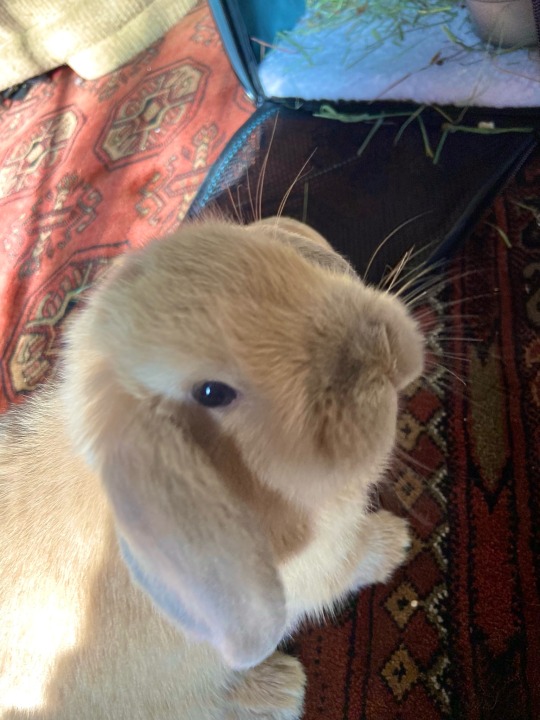
well he turns 9 weeks tomorrow 🥺
#he does binkys all over the place and is barely the size of my shoe#🥹I’m getting up at like 5 am these days#to take him out to play in his safe space (living room) can’t free roam him bc I have a cat :/#he’ll be eating his own poop and I’m like 🥹🥹🥹#luckily he’s already semi potty trained#ngl the routine of taking care of him has gotten be out of a slump <3#his name is Alonso btw#and his father is called Blue Potato n mother is Daphne 🥹 he looks a lot like his dad structurally
29 notes
·
View notes
Text

Looking like a flying saucer has landed,
an industrial building blending into the local countryside.
#Buildings#Structures#Architecture#Landscape#Scenery#Aesthetic#Country#Countrycore#Trees#Green#Blue#Blue Sky#Clouds#Naturecore#View#Wanderlust#Photography#Spring#Field#Meadow
72 notes
·
View notes
Text

My Imaginary Architecture i
By Jeff Stanford, 2023
Buy prints at:
https://jeff-stanford.pixels.com/
#© Jeff Stanford#midjourney#midjourneyart#ai#discord#digitalart#aiart#Artists on tumblr#ImaginaryArchitecture#structures#blues#bluelight#azure#orange#architecturepaintings#shadowystillness#architecturallandscapes#tonalistpaintings#vibrantcolors#amber#watercolor#niji5
71 notes
·
View notes
Text

#blood tw#gore tw#? pretty sure#four swords#four swords manga#violet link#blue link#for a storyline that only exists in my head.#vios fine he will be fine#the effort here is put on the lines and pose and structuring which is why there is no shading or background. too tired. i did what i wanted#to do. im moving on to the next illustration
62 notes
·
View notes
Text

guy who wants his work to have some kind of higher purpose takes a job where he can never know what he's doing
(obligatory song link)
#donovan crane#donnie c.#structural planning and oversight#severance au#oc#it's so weird drawing him in blue. usually he wears warm colors only#severance 🤝 through the red door - color symbolism
159 notes
·
View notes
Note
I’m taking my first anatomy class and losing my mind a little. Any study tips for learning names of things, and/or how does anyone tell shit apart during dissections, cause I feel like it all looks like meat 😭
ok so like when i was maybe 11 years old I got really obsessed with this book called Hatchet, where a boy ends up stranded in the woods after a plane crash and has to survive on his own. there's a scene in the book where he's trying to hunt these birds because he's starving and has run out of the plane's emergency provisions, and he can't see them!! he knows the birds are somewhere out there but they camouflage pretty well so he's just failing over and over again.
and then there's one moment where he watches one of these birds take flight silhouetted against the sky and he SEES it. and he realizes that he was looking in all the wrong ways. he was just stumbling around looking for "bird" when what he needed to do was relearn how to see. and in order to relearn how to see he needed to understand the shape. and then he goes back into the forest and blinks and suddenly, there are a millions birds just sitting there.
and i think this is really true of how to succeed in anatomy lab. the brachial plexus looks like a mess because you are looking for the brachial plexus but you don't understand its shape. you don't understand how it connects to everything else and how it exists within the body, so you're just kinda lost in there poking around. of course it just looks like meat, you haven't learned how to see it yet.
so like, tips: can you draw it from memory? can you explain it's three dimensional relationship to the structures it surrounds and that surround it? have you gone in and practiced, explained it to a classmate and had them teach it back to you? can you start at one end of the structure and follow it all the way down? anatomy is often taught in disparate parts, either systemically or limb-by-limb, but it's one system. I can pull on a tendon in the forearm and the finger moves. I can pull on a nerve at the shoulder and see that same nerve move down by the wrist. and it isn't easy!! it takes time and practice and failure but once you learn to See it's like you blink and suddenly there are a million birds
for terminology I recomend learning what the word means (i.e. brachial means arm, ante means "before", logically then it follows that antebrachial means forearm. proximal to distal, the muscles of coracobrachialis -> brachialis -> brachioradialis make logical sense in their order) and then just practicing. flashcards, writing it out by hand, drilling your friends and getting quizzed in turn.
good luck!!!
#ask#anatomy tag#otherwise i recomend kenhub. michegan blue link. youtube videos of people going over structures.#obviously. cadaver content warning for those#netter is the best atlas IMO rohen has photos but if you don't know how to see it's not helpful#shewhosleepsalotincemetaries
34 notes
·
View notes
Text
hello miners and crafters i have questions about the deep dark
see i can admit i don’t know everything
(if anyone has theories or more questions send em i have ancient city brainrot again and this is all i can think about)
1. why does the sculk inflict darkness
the doylist answer here is definitely ‘game design’, but in terms of the sculk’s biology in-universe—it doesn’t have eyes. it would have no reason to understand the concept of vision, so how does it block ours?
2. why don’t catalysts make more catalysts
when catalysts spread sculk they make sensors and shriekers, albeit rarely, but they never spawn new catalysts. the only way to create a new catalyst is to kill a warden, which means past a certain point the sculk depends on players to spread itself. again, might just be a gameplay decision, but if this is an intentional part of sculk lore it then raises the question of how the hell all the naturally generated catalysts got where they are
3. why would the pillagers bother to build with wool
now ok for context afaik no official source has confirmed for sure that the pillagers were ever there, but they obviously were, and for a while. because some parts of the cities will contain structures like these:

which are designed in the distinct style of pillager outposts and don’t match the rest of the city at all. there’s also the piles of cyan, blue, and light blue wool referred to as ‘camps’ that match the wool piles found in woodland mansions, and the implication here is that the pillagers used this wool to reconstruct parts of the wool walkways.
the problem is, the pillagers’ apparent reconstruction efforts consistently prioritize practicality over the original builders’ stylistic choices, and they would have no practical reason to use wool if only vibrations made by players can activate shriekers. so why bother? why not use wood planks or cobblestone like they do everywhere else?
#mumbling#minecraft#i feel a little like the cinemasins guy here but i promise that’s not why i’m asking#the answers to these questions are very important to my ever-expanding and unnecessarily intricate personal sculk lore#like genuinely#i recognize there are limitations to any form of storytelling i just want to know what’s lore and what’s a compromise#where is the line give me the special secret knowledge so i can start making art about it#although number 3 is kinda one of the places where i think i disagree with the writers#i don’t like the pillagers being the source of the blue wool scattered around bc before i realized they made those wooden structures#the story implied by the colored wool was WAY cooler and so much worse
71 notes
·
View notes